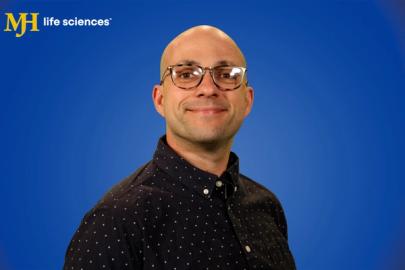- About Us
- Advertise / Support
- Editorial Board
- Contact Us
- CancerNetwork.com
- TargetedOnc.com
- OncLive.com
- OncNursingNews.com
- Terms & Conditions
- Privacy
- Do Not Sell My Information
- Washington My Health My Data
© 2025 MJH Life Sciences™ and CURE - Oncology & Cancer News for Patients & Caregivers. All rights reserved.
What Role Does MRD Play in Multiple Myeloma Treatment Decision Making?

A nationally-published, award-winning journalist, Alex Biese joined the CURE team as an assistant managing editor in April 2023. Prior to that, Alex's work was published in outlets including the Chicago Sun-Times, MTV.com, USA TODAY and the Press of Atlantic City. Alex is a member of NLGJA: The Association of LGBTQ+ Journalists, and also performs at the Jersey Shore with the acoustic jam band Somewhat Relative.
Dr. Surbhi Sidana discussed the topic of minimal residual disease during the CURE Educated Patient® Multiple Myeloma Summit.
The question of whether minimal residual disease can help with the treatment decision-making process for patients with multiple myeloma is being explored across a number of clinical trials, Dr. Surbhi Sidana explained during her presentation at the CURE Educated Patient® Multiple Myeloma Summit.
Sidana, an associate professor of medicine at Stanford University in Stanford, California, specializes in the treatment of multiple myeloma and related disorders, and is the leader of the Myeloma CAR-T/Immunotherapy program at Stanford.
Minimal residual disease, or MRD, is a term used to describe a very small amount of cancer cells remaining in a patient’s body during or after treatment, according to the National Cancer Institute website, which went on to note that minimal residual disease can only be found by highly sensitive laboratory methods, and checking for the presence of minimal residual disease may help plan treatment, find out how well treatment is working or see if cancer has come back, or make a prognosis.
“Across the country, myeloma physicians are using [minimal residual disease] variably in clinical decision making,” said Sidana. “Some use it more; some use it less. This is where, in the absence of clinical data, it's [up to] doctors' own judgment and use of data from some of the trials that have been reported. What I would say I do is I always use it to give prognostic information. We know that patients who are MRD negative can do well. I sometimes use it for treatment decision making. Sometimes I use it to discontinue maintenance.
“If patients are on two-drug maintenance, we know that in one of the clinical trials that use four drugs up front and then two drugs, [Darzalex (daratumumab)] and [Revlimid (lenalidomide)] later, if patients were MRD-negative after two years, they could stop [Darzalex] and continue [Revlimid]. I will use that in those situations. Maybe for high-risk patients, I wouldn't stop [Darzalex], but for standard-risk patients, I would stop it. If someone's having a lot of side effects from [Revlimid] maintenance, if they're MRD negative, it gives me more confidence to stop it a couple of years after transplant than if they were MRD positive.”
Sidana said she doesn’t use minimal residual disease to make decisions for every patient, nor does she use It to make decisions on who should receive a transplant.
“But,” she said, “my colleagues will look at things differently. Why? Because there is no right or wrong here. It's just that we are waiting for data. The data is emerging here, so I would rather wait for that solid data, before I start using it for clinical decision making for every patient.”
Among the recent notable clinical trials discussed by Sidana was the phase 2 MASTER trial. That trial, findings of which were published in The Lancet Hematology, showed that “for standard-risk patients who get very intense therapy and go into MRD negativity that's sustained, it might be safe to stop treatment,” Sidana said. “Why don't I do that in my clinical practice? It's not a randomized trial yet. It only had one arm, so it can be used if a patient completely understands what they are getting into.”
Sidana said she is looking forward to the results of the SWOG 1803 trial, also known as the DRAMATIC study, which is randomizing patients to receive Darzalex plus Revlimid or Revlimid alone as a post-autologous stem cell transplant maintenance therapy for multiple myeloma, using minimal residual disease to direct treatment duration.
“When we get the results of such trials, and it's an over-1,000-patient trial, that will give us confidence as doctors to implement this in our daily clinical decision making. But I am confident this is where the field is going,” she concluded.
For more news on cancer updates, research and education, don’t forget to subscribe to CURE®’s newsletters here.
Related Content:



